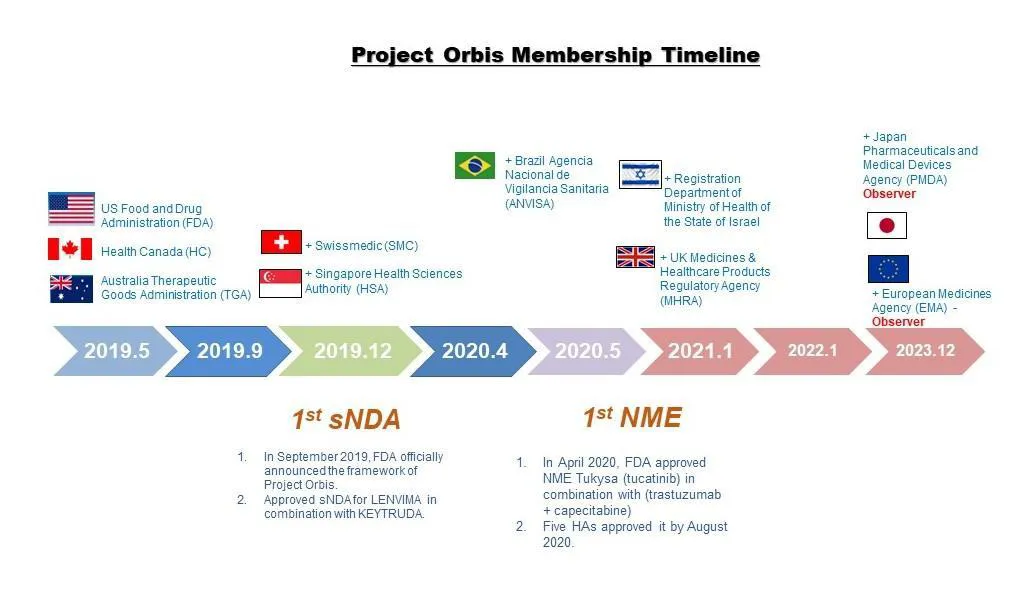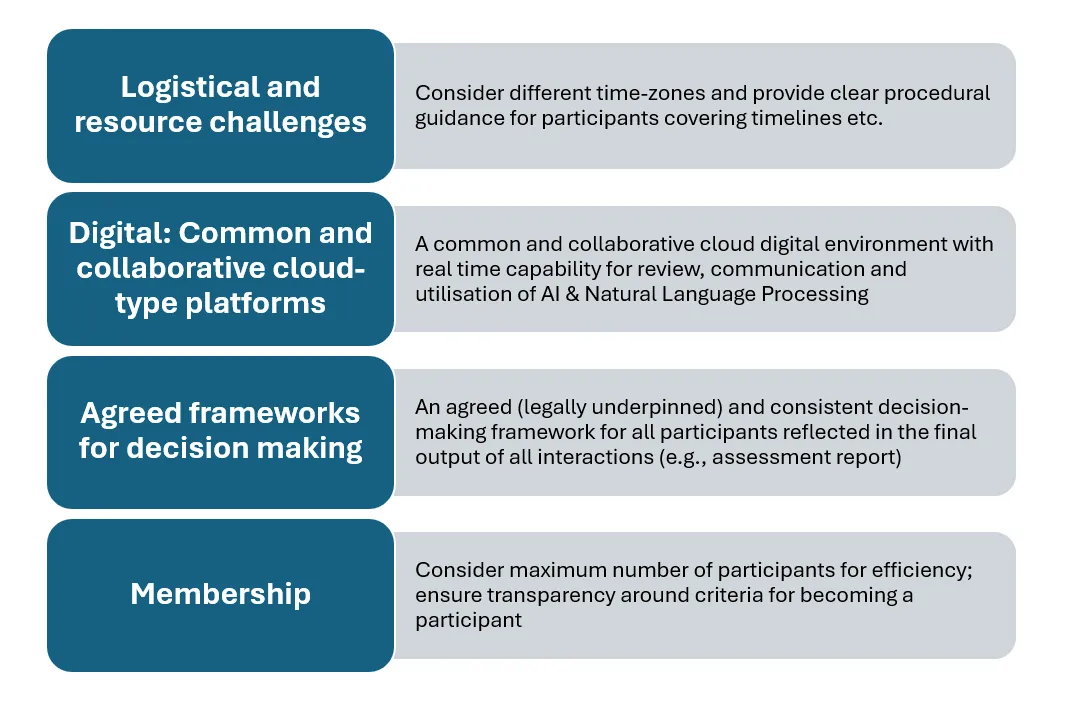he need to optimize drug development and facilitate faster access for patients has focused discussions on the importance of improving interactions between health technology assessment (HTA) bodies and regulatory authorities. In most cases, once the medicine is authorized, market access is determined by the healthcare system’s financing mechanisms, and payers usually rely on the assistance of HTA bodies who decide whether to reimburse a product based on its relative value under current clinical practice scenarios. This is usually a lengthy process that occurs after regulatory review. Though regulators have been working to reduce review timelines through regulatory reliance and work-sharing procedures, HTA timelines have remained unchanged, and thus the overall benefit of these regulatory reforms to patients is far less significant than it might be. In recent years, however, international collaborative cross-border regulatory and HTA body frameworks have been established to optimize decision making.
International Regulatory Collaborative Frameworks
Several national regulatory authorities (NRAs) are collaborating to make the regulatory review process more efficient through reliance and work-sharing pathways across international borders. The most commonly known international work-sharing partnerships are Project Orbis and the ACCESS Consortium.
Project Orbis
Established by FDA’s Oncology Center of Excellence (OCE), Project Orbis is a framework for concurrent submission and review of oncology products led by US FDA in collaboration with NRAs from Australia, Brazil, Canada, Israel, Singapore, Switzerland, and the UK. Japan’s PMDA and the EMA (European Medicines Agency) recently joined as observers.
Though the official Project Orbis review timelines are aligned with the established review timelines of the NRAs participating in the procedure, FDA has reported a reduction in time to approval for both the FDA and other participating Project Orbis NRAs.

ACCESS Consortium
Established in 2017, the ACCESS Consortium (formerly ACSS) is a collaborative initiative of five medium-sized regulatory authorities (Therapeutic Goods Administration of Australia, Health Canada, the MHRA in the UK, Swissmedic, and the Health Sciences Authority [HSA] in Singapore) to build synergies/share knowledge, and thereby enhance the efficiency of regulatory systems. The ACCESS New Active Substance (NAS) Working Group is responsible for new medicines registrations (small molecules & biologics) and new clinical indications.
An industry analysis has shown that the median time taken for approval of NASs via ACCESS was quicker when compared to all NASs approved between 2018 and 2022 by all the ACCESS Regulatory Authorities. In this study, MHRA was not included due to lack of data. This study shows that participating in ACCESS NAS collaborative review can facilitate a faster regulatory approval compared to the national review timelines for NAS reviews.
HTA Collaborative Frameworks
In a recent survey conducted by the pharmaceutical industry trade associations of the five ACCESS Consortium countries, sponsor affiliates who participated in an ACCESS procedure thought that approval via ACCESS had had “no impact” on pricing and reimbursement timelines in their country. A recent study of Project Orbis focusing on the US, UK, and Canada and accelerating access to medicines makes similar observations.
Though initiatives like Project Orbis and ACCESS Consortiums are leading to reductions in the submission gap (time between submission to the first NRA worldwide and subsequent NRAs) and regulatory review timelines, this alone will not put novel therapies in the hands of patients more quickly; collaborative frameworks for HTA reviews as well as between HTAs and regulators are needed.
Though it is still early, international HTA bodies are starting to collaborate and share knowledge in hopes of developing new approaches to HTA.
Established in 2021, the AUS-CAN-NZ-UK HTA Collaboration Arrangement is a collaborative initiative of eight HTA bodies across four countries (Australia, Canada, New Zealand, and the UK) which has prioritized working on three areas in 2023-2024: exploring opportunities and challenges to work-sharing across HTA partners; horizon scanning to support better system preparedness; and science and methods development.
HTA and Regulatory Collaborative Frameworks
True benefits of these collaborative frameworks will hopefully be realized when the timelines of the HTA and regulatory assessments are synchronized. To date, collaborations have been established between HTA bodies and regulators in Canada, the UK, and EU.
In Canada, the Canadian Agency for Drugs and Technologies in Health (CADTH) review process expanded from CADTH-only scientific advice to include a Parallel Scientific Advice (PSA) pathway in 2019 and allows sponsors to seek parallel scientific advice from Canada’s Drug Agency (CDA; formerly CADTH) and Health Canada or CADTH and the UK’s National Institute for Health and Care Excellence (NICE). The parallel scientific advice aims at streamlining drug development, aligning evidence generation with participating stakeholder needs, and ultimately facilitating faster patient access to new medicines while making the process more efficient for manufacturers.
The UK Innovative Licensing & Access Pathway (ILAP) was established in 2021 as a highly collaborative scheme between the Medicines and Healthcare Products Regulatory Agency (MHRA) and UK HTA agencies (National Institute for Health and Care Excellence [NICE]), Scottish Medicines Consortium [SMC], and the All Wales Therapeutics and Toxicology Centre [AWTTC]) to accelerate development of medicines and streamline the end-to-end process to improve patient access to medicines in the UK. Though the focus is typically on products in early development (phase 1 through 3), sponsors with products in pre-clinical stage are also encouraged to participate.
ILAP saw a significant uptake in its first year, with 58% of applicant medicines being approved, 10% not accepted, and 32% still in progress. This indicates a relatively high success rate for new medicines entering the pathway. Also, manufacturers are engaging more positively with ILAP than with UK’s Early Access to Medicines Scheme (EAMS). Another example of the success of ILAP is the allowance for early access to innovative medicines for rare diseases, such as a treatment for von Hippel Lindau disease, a rare genetic disorder that causes cancer.
The new EU HTA Regulation builds on the collaboration that EMA started back in 2009 with the European Network for Health Technology Assessment (EUnetHTA), a network of HTA bodies in Europe. The EMA and EUnetHTA Consortium began as a project to test out whether early engagement between regulators and HTA bodies could bring tangible benefits for patient access to medicines in 2010, and was completed in September 2023. Implementation of the EU HTA Regulation will start in 2025 and will formalize joint scientific consultations and should bring timings for regulatory review and HTA review closer together.
Systematic analyses of parallel scientific advice between manufacturers, regulatory agencies, and HTA bodies in the past few years have shown positive trends that support medicines access, such as positive reception by manufacturers, improved alignment of evidence requirement, recommendation implementation, and addressing multiple objectives. In two instances of parallel EU and HTA scientific advice, two manufacturers (one for respiratory and one for rare disease indication) adapted their clinical trial design to include comparators following the advice of the HTA body.
It is noted that with any such collaborations, further work is required to be done for improvements, and further follow-up is required to assess the impact on market access speed.

Future Considerations for Joint HTA-NRA Work-Sharing Models
These examples show that there are existing mechanisms for HTAs and NRAs to work together in an efficient and collaborative way. Reflecting on experiences with these mechanisms, the following aspects can be considered when any new international joint NRA-HTA models are being developed:
For development of certain new products, early engagement with both NRA and HTA bodies could be beneficial in expediting patient access; ILAP in the UK provides an example of enabling access to treatment for von Hippel Lindau disease, a rare oncology disease. Manufacturers adopting the advice of EU and HTA during the clinical development program, generating evidence for regulatory and HTA approvals, can also pave the way for smoother access (like in the previously mentioned respiratory and oncology examples).
In such cases, frameworks for engagement on a global scale that are harmonized, convergent, and transparent would be most efficient for interactions, decision making, communication, and patient access to needed medicines.

